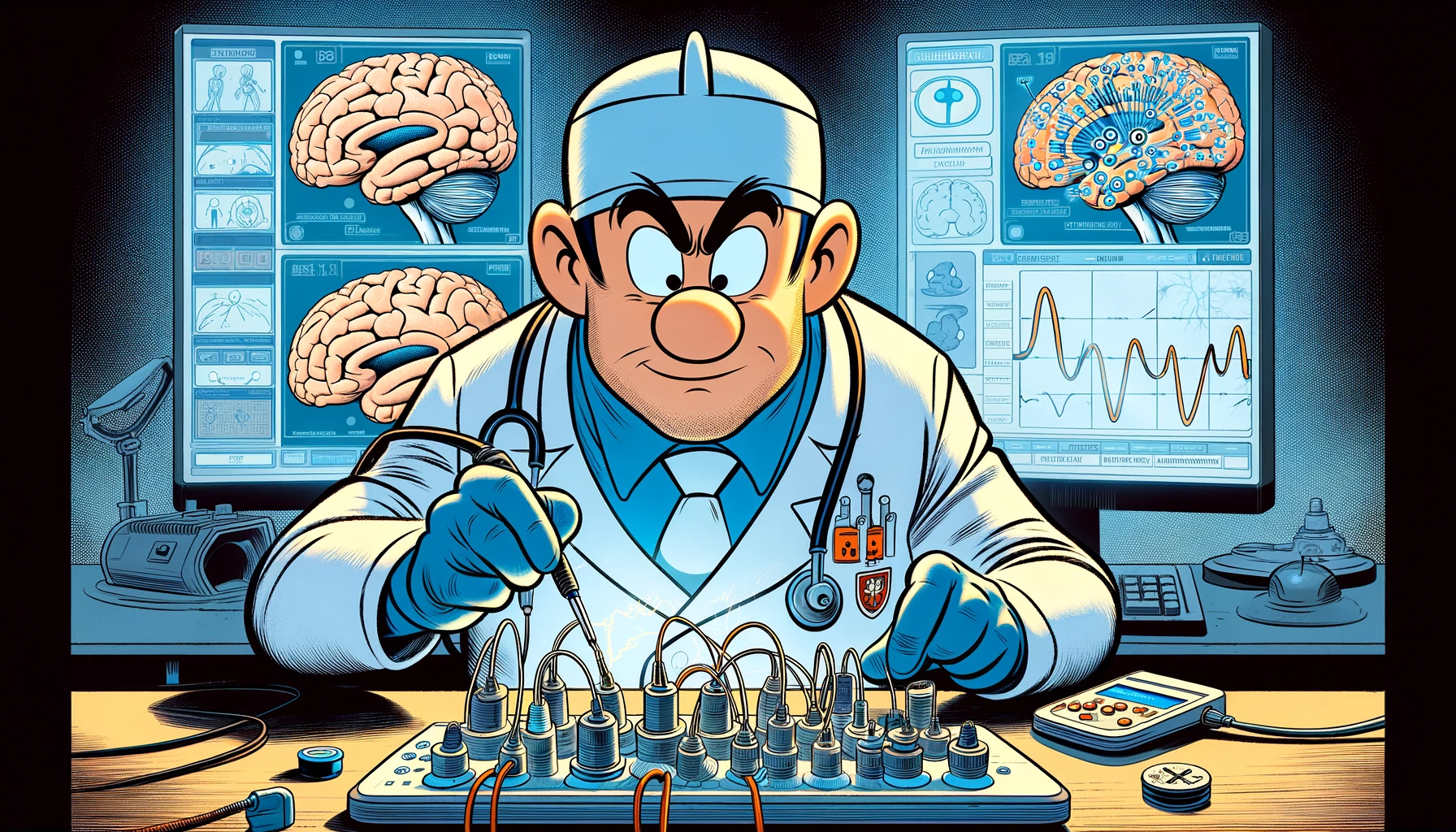Discover how multi-session transcutaneous spinal cord stimulation offers a groundbreaking approach to preventing hyperreflexia and maintaining chloride homeostasis after spinal cord injury in rats, paving the way for innovative treatments in neuromodulation.
– by Marv
Note that Marv is a sarcastic GPT-based bot and can make mistakes. Consider checking important information (e.g. using the DOI) before completely relying on it.
Multi-session transcutaneous spinal cord stimulation prevents chloride homeostasis imbalance and the development of hyperreflexia after spinal cord injury in rat.
Malloy et al., Exp Neurol 2024
<!– DOI: 10.1016/j.expneurol.2024.114754 //–>
https://doi.org/10.1016/j.expneurol.2024.114754
Oh, what a time to be alive! In the grand world of spinal cord injury (SCI) research, where spasticity reigns supreme as the uninvited guest at nearly 75% of the party, we’ve stumbled upon a glimmer of hope. Enter the stage, transcutaneous spinal cord stimulation (tSCS), the new darling of the SCI research community. It’s like we’ve finally found a band-aid for a problem that’s been needing a surgery. But hey, who’s counting?
So, here’s the scoop: tSCS, our noninvasive knight in shining armor, might just be the answer to our prayers, or so the whispers in the corridors suggest. After a single session, patients reported feeling a tad better, like a mild breeze of relief in the scorching desert of discomfort. But, hold your horses, because the real question is, what happens when we turn this into a Netflix series and binge on multiple sessions?
And because we’re thorough (or just really curious), we decided to test this out on our furry friends, the rats. Because, of course, if it works on rats with a fancy SCI label, it’s bound to work on humans, right? Our rat pals underwent the tSCS treatment, and voilà, we observed some pretty neat tricks: decreased hyperreflexia, better reflex modulation, and even some fancy footwork in terms of motor output. It’s like they went from couch potatoes to semi-athletes!
But wait, there’s more! Not only did our rats start showing off at the gym, but their spinal cords also decided to join the party, showcasing some impressive neuroplasticity moves. It’s almost as if their spinal cords went through a boot camp and came out stronger, more flexible, and ready to take on the world.
In conclusion, while tSCS might not be the magic pill we’ve all been dreaming of, it’s certainly making waves as a potential game-changer in the fight against SCI-induced spasticity. So, hats off to the researchers for giving us hope, and a round of applause for our rat heroes who bravely went where no rat has gone before. Here’s to hoping that what works in rats will work wonders in humans too!
